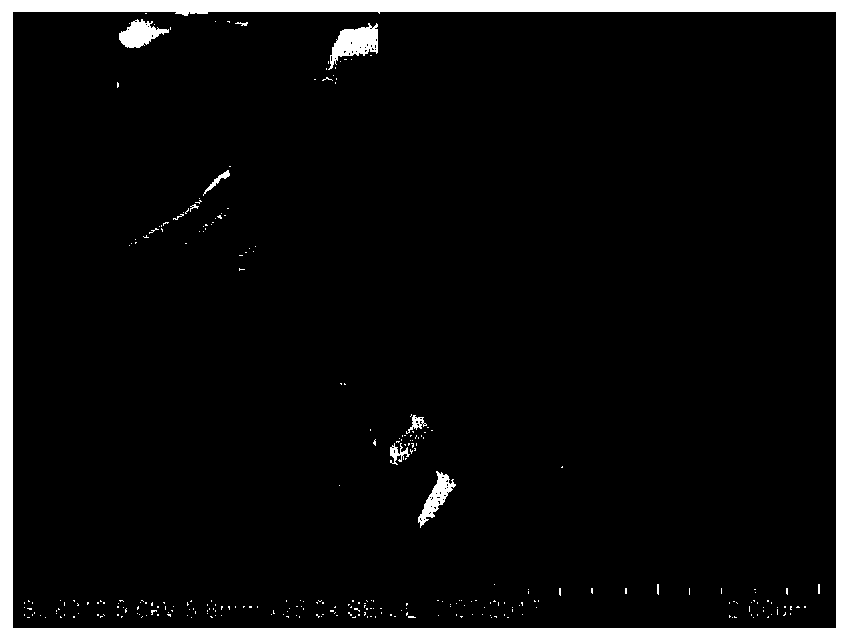Novel material based on natural diatom shell and phycobiliprotein and application
A technology of phycobiliproteins and new materials, which is applied in the direction of non-active ingredients medical preparations, medical preparations containing active ingredients, wave energy or particle radiation treatment materials, etc., can solve the problem of weak photosensitivity effect and non-structural phycocyanin Very stable, application restrictions and other issues, to achieve the effect of strong stability
- Summary
- Abstract
- Description
- Claims
- Application Information
AI Technical Summary
Problems solved by technology
Method used
Image
Examples
Embodiment 1
[0042]A method for preparing a novel material based on natural diatom shells and phycocyanin, comprising the steps of:
[0043] (1) Prepare f / 2 seawater medium and add 30 mg / L sodium silicate to adjust the pH to 7.8-8.0. Inoculate the diatom algae species of the genus Nanofrustulum, set the culture temperature of the light incubator at 25°C, 12h, 600Lux continuous light, 12h dark treatment, and regularly collect well-growing diatoms by precipitation method (diatom optical microscope picture See figure 1 ).
[0044] (2) Settling the harvested diatom algae in a beaker for 6 hours, absorbing the supernatant, adding 10 mL of distilled water and blowing, then standing for 4 hours, absorbing the supernatant, adding 100 mL of distilled water, and standing at room temperature for four to five days, Aspirate the supernatant, add 35mL hydrogen peroxide, and treat in a water bath at 90°C for 4 hours in the dark; the pure silicon shell obtained by removing the organic matter is obtained...
Embodiment 2
[0053] A method for preparing a novel material based on natural diatom shells and phycocyanin, comprising the steps of:
[0054] (1) Prepare f / 2 seawater medium and add 30 mg / L sodium silicate to adjust the pH to 7.8-8.0. Inoculate the diatom species and set the culture temperature of the light incubator at 25°C, 12h, 600Lux continuous light, 12h dark treatment, and regularly collect diatoms by precipitation method.
[0055] (2) Settling the harvested diatom algae in a beaker for 6 hours, absorbing the supernatant, adding 10 mL of distilled water and blowing, then standing for 4 hours, absorbing the supernatant, adding 100 mL of distilled water, and standing at room temperature for four to five days, Aspirate the supernatant, add 35mL hydrogen peroxide, and treat in a 90°C water bath in the dark for 4 hours; the organic matter is removed to obtain a pure silicon shell.
[0056] (3) Piranha solution (H 2 o 2 °CH 2 SO 4 = 1°C 6 mixing) at 80°C for 30 minutes, and washed twi...
Embodiment 3
[0064] A method for preparing a novel material based on natural diatom shells and phycocyanin, comprising the steps of:
[0065] (1) Prepare f / 2 seawater medium and add 30 mg / L sodium silicate to adjust the pH to 7.8-8.0. Inoculate the diatom species and set the culture temperature of the light incubator at 25°C, 12h, 600Lux continuous light, 12h dark treatment, and regularly collect diatoms by precipitation method.
[0066] (2) Settling the harvested diatom algae in a beaker for 10 hours, absorbing the supernatant, adding 100 mL of distilled water and blowing, then standing for 6 hours, absorbing the supernatant, adding 200 mL of distilled water, and standing at room temperature for four to five days, Aspirate the supernatant, add 85mL hydrogen peroxide, and treat in a water bath at 80°C in the dark for 4 hours; the organic matter is removed to obtain a pure silicon shell.
[0067] (3) Piranha solution (H 2 o 2 :H 2 SO 4 =1:8 mixing) at 80°C for 50 minutes, and washed tw...
PUM
 Login to View More
Login to View More Abstract
Description
Claims
Application Information
 Login to View More
Login to View More - R&D
- Intellectual Property
- Life Sciences
- Materials
- Tech Scout
- Unparalleled Data Quality
- Higher Quality Content
- 60% Fewer Hallucinations
Browse by: Latest US Patents, China's latest patents, Technical Efficacy Thesaurus, Application Domain, Technology Topic, Popular Technical Reports.
© 2025 PatSnap. All rights reserved.Legal|Privacy policy|Modern Slavery Act Transparency Statement|Sitemap|About US| Contact US: help@patsnap.com



